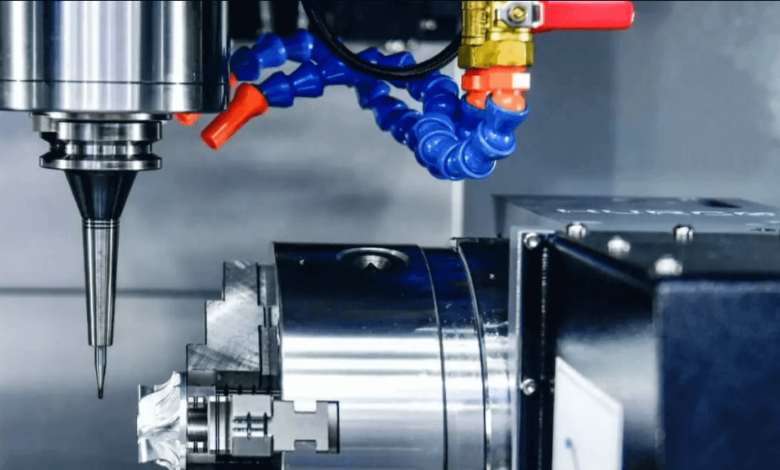Unveiling the Precision of Aluminum CNC Machining: A Complete Guide

In the rapidly advancing world of modern manufacturing, few combinations are as effective and efficient as aluminum CNC machining. This process—where aluminum is shaped with extreme precision through computer numerical control (CNC) machines—has revolutionized industries ranging from aerospace to medical devices. Whether it’s a single prototype or a mass production run, aluminum CNC machining offers superior accuracy, repeatability, and finish quality.
This comprehensive article explores why aluminum is a preferred material, how CNC technology enhances its potential, and what industries are relying on this dynamic duo to achieve superior results.
What is Aluminum CNC Machining?
Aluminum CNC machining refers to the process of using computer-controlled machines to cut, shape, and refine aluminum into finished parts. CNC (Computer Numerical Control) systems interpret a digital design file and control machinery like lathes, mills, drills, and grinders to carve raw aluminum stock into precision-engineered components.
The result? High-quality parts with extremely tight tolerances—sometimes as precise as ±0.001 mm—created with consistency and speed.
See also: How AI Face Swap Technology Is Shaping Influencer Marketing
Why Choose Aluminum for CNC Machining?
Aluminum is one of the most commonly used metals in manufacturing, and it’s not hard to see why:
1. Lightweight but Strong
Aluminum offers a fantastic strength-to-weight ratio, making it ideal for applications where reducing weight is crucial, such as aerospace components and automotive parts.
2. Highly Machinable
Compared to harder metals like stainless steel or titanium, aluminum is easier to machine. This translates to faster production times, reduced tool wear, and lower manufacturing costs.
3. Corrosion Resistant
Aluminum naturally forms a protective oxide layer, making it suitable for environments exposed to moisture, chemicals, or outdoor conditions.
4. Excellent Thermal and Electrical Conductivity
This makes aluminum CNC machined parts perfect for heat sinks, electrical enclosures, and connectors.
5. Attractive Finishing Properties
From anodizing to powder coating, aluminum accepts a wide variety of surface treatments for aesthetic and protective purposes.
Common Aluminum Grades Used in CNC Machining
The versatility of aluminum is further enhanced by the variety of grades available. Some of the most widely used in aluminum CNC machining include:
- 6061-T6: Known for its excellent mechanical properties and corrosion resistance, ideal for structural components and enclosures.
- 7075: A high-strength aluminum alloy used in aerospace and defense due to its superior fatigue resistance.
- 2024: Popular in military and aerospace applications; offers great strength but less corrosion resistance.
- 5052: Excellent for forming and bending applications such as panels and marine parts.
The Aluminum CNC Machining Process
Understanding how aluminum parts are created using CNC machinery is key to appreciating the complexity and value of the process:
1. Designing the CAD Model
It all starts with a CAD (Computer-Aided Design) file, where the product’s 3D geometry, tolerances, and specifications are defined.
2. Generating the CAM Toolpath
The CAD design is translated into CAM (Computer-Aided Manufacturing) software, which creates a toolpath—a digital map that tells the CNC machine how to move.
3. Setup and Fixturing
Raw aluminum stock is clamped securely into the CNC machine to avoid vibration and inaccuracies.
4. Machining Operations
Depending on the complexity, several machining steps may be performed, including:
- Milling: For slots, contours, and surfaces.
- Turning: Ideal for cylindrical parts.
- Drilling: To create holes and cavities.
- Threading: Internal or external threads can be cut with high precision.
5. Post-Machining Finishing
After machining, the part may undergo deburring, anodizing, polishing, bead blasting, or powder coating to enhance its appearance and durability.
Applications of Aluminum CNC Machining
The versatility of aluminum CNC machining makes it indispensable across countless industries:
✈️ Aerospace
Aluminum is essential for manufacturing aircraft parts like brackets, frames, and landing gear components. The material’s strength-to-weight ratio is crucial for flight dynamics and fuel efficiency.
🚗 Automotive
From engine blocks to transmission housings, aluminum CNC machined components are used to reduce weight and improve vehicle performance.
💻 Electronics
Aluminum’s conductivity and heat resistance make it ideal for CNC machined laptop bodies, smartphone frames, and cooling systems.
🏥 Medical Devices
Precision is non-negotiable in healthcare. CNC machining allows the creation of surgical instruments, prosthetics, and diagnostic equipment made from medical-grade aluminum.
🏭 Industrial Machinery
Automation components, robotics arms, and mechanical parts made from aluminum benefit from tight tolerances and high durability.
Surface Finishing for CNC Aluminum Parts
One of the main reasons aluminum is preferred is its ability to accept a wide range of finishes. Common surface treatments include:
- Anodizing: Enhances corrosion resistance and allows for colored finishes.
- Powder Coating: Adds a durable, decorative coating.
- Polishing: Produces a mirror-like shine, ideal for consumer electronics.
- Bead Blasting: Creates a uniform, matte surface finish.
Advantages of Aluminum CNC Machining
Here are the top reasons manufacturers and engineers prefer aluminum CNC machining:
- Reduced Lead Times: Shorter machining cycles due to aluminum’s softness.
- Lower Production Costs: Less tool wear and faster cutting lead to cost savings.
- Repeatable Accuracy: CNC ensures consistency across large production runs.
- Customization and Prototyping: Easily create one-off designs for testing before scaling.
Challenges and Solutions in Machining Aluminum
While machining aluminum is generally efficient, there are a few considerations:
- Chip Control: Aluminum tends to form long chips, which can clog the machine if not properly evacuated.
- Burr Formation: Due to its softness, aluminum may leave burrs that require additional deburring.
- Thermal Expansion: The metal expands when heated, which can affect high-precision tolerances.
To mitigate these, CNC machinists use sharp tools, proper coolant systems, and adaptive feeds and speeds.
Emerging Trends in Aluminum CNC Machining
🔄 Automation
CNC shops are integrating robots for part handling, increasing efficiency and consistency in aluminum machining.
🧠 AI and Machine Learning
AI-driven software can optimize toolpaths and predict tool wear, minimizing errors and reducing waste.
🌱 Sustainable Machining
With a focus on green manufacturing, many companies now recycle aluminum chips and use eco-friendly lubricants.
Conclusion
In an era where precision and performance define product success, aluminum CNC machining has emerged as a cornerstone of modern manufacturing. It marries the desirable traits of aluminum—lightweight, durable, corrosion-resistant—with the unrivaled accuracy of CNC machines. From prototypes to mass production, and from simple brackets to complex aerospace components, this technology offers unmatched value across industries.
For manufacturers seeking an edge in efficiency, quality, and scalability, investing in aluminum CNC machining is not just an option—it’s a necessity.





